3-8. Once again. Hevelius has in his illustration below of Aquarius
at left described the opposite, it
seems, of the flow from the urn hanging around his right arm,
viz. what looks like a dry towel 'swallowing' water (μ).
In contrast, as I seem to recall it, the Bird Man on Easter
Island had a piece of red cloth tied around his arm.
|
Egyptian
water ripples |
 |
Phoenician
mēm |
 |
Greek
mu |
Μ (μ) |

At right the Urn is full of liquid in contrast to the state of
Emptiness suggested at the Chinese 11th station named Rat
→ Water.
... In China, with Capricornus, Pisces,
and a part of Sagittarius, it [Aquarius] constituted the
early Serpent, or Turtle, Tien Yuen; and later was
known as Hiuen Ying, the Dark Warrior and Hero, or
Darkly Flourishing One, the Hiuen Wu, or Hiuen
Heaou, of the Han dynasty,
which Dupuis gave as Hiven Mao. It was a symbol of
the emperor Tchoun Hin, in whose reign was a great
deluge; but after the Jesuits came in it became Paou Ping,
the Precious Vase. It contained three of the sieu, and
headed the list of zodiac signs as the Rat, which in
the far East was the ideograph for 'water', and still so
remains in the almanacs of Central Asia, Cochin China, and
Japan ...
Presumably this Precious Vase was refilled at Bunda, where Sirius
culminated at 21h:

... In ancient Egypt they thought Sirius
was behind the yearly rise of the Nile ... the seasonal
cycle, throughout the ancient world, was the foremost sign
of rebirth following death, and in Egypt the chronometer of
this cycle was the annual flooding of the Nile ...
|
Jan 29
(394) |
*1 |
31 (396) |
*3 |
Febr
4 (400) |
*5 |
9 (40 =
220 - 180) |
*2 |
11
(42) |
|
*314
→
π |
Ea3-14 →
π |
*320.0 |
*325 |
*327 |
|
ALBALI (ε
Aquarii) |
μ (316.0) |
ν Aquarii |
SADALSUD
(β Aquarii) |
BUNDA
(Foundation) = ξ Aquarii |
|
Bat |
 |
DRAMASA
|
Rat |
SIRIUS |
|
10 Girl |
11 Emptiness |
|
(29 + 180
= 209) |
Aug 8
(220) |
5 days after the right ascension line at the south
pole star Dramasa was the Luckiest of the
Lucky, i.e. the beginning of the season of the
Rat (→
Kiore),
the Darkly Flourishing One.
Kiore. Rat. Vanaga. Rat, mouse; kiore hiva,
rabbit. P Pau., Mgv.: kiore, rat, mouse. Mq.:
kioē,
íoé, id. Ta.:
iore, id.
Churchill.

|
321.5), δ
Equulei (321.7),
φ
Capricorni (321.8) |
KITALPHA (Part of a Horse) =
α
Equulei
(322.0),
ALDERAMIN (The Right Arm) =
α
Cephei
(322.9) |
DAI =
ι
Capricorni
(323.5),
β
Equulei (323.8) |
γ
Pavonis (324.1),
YAN =
ζ
Capricorni
(324.6) |
Al Sa'd al Su'ud-22 (Luckiest of the Lucky)
/
Emptiness-11 (Rat)
TSIN = 36 Capricorni
(325.2),
ALPHIRK (The Flock) =
β
Cephei
(325.7),
SADALSUD =
β
Aquarii,
ξ
Gruis (325.9)
|
No star listed (326) |
CASTRA =
ε
Capricorni
(327.2),
BUNDA (Foundation) =
ξ
Aquarii
(327.5)
SIRIUS (α Canis Majoris) |
Mahar sha hi-na
Shahū-26 (Western One in the Tail of the
Goat)
NASHIRA (Fortunate One) =
γ
Capricorni
(328.0),
ν
Oct. (328.3),
AZELFAFAGE (Horse's Foot Track) =
π¹
Cygni,
κ
Capricorni (328.7) |
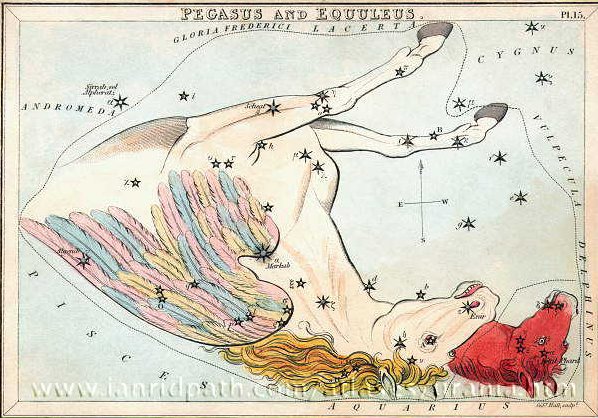 |
|
Febr 5
(36) |
6 |
7 |
8 (404) |
9 (40) |
10 |
11 |
12 (408) |
|
... On February 9 the Chorti Ah K'in,
'diviners', begin the agricultural year.
Both the 260-day cycle and the solar year
are used in setting dates for religious and
agricultural ceremonies, especially when
those rituals fall at the same time in both
calendars. The ceremony begins when the
diviners go to a sacred spring where they
choose five stones with the proper shape and
color. These stones will mark the five
positions of the sacred cosmogram created by
the ritual. When the stones are brought back
to the ceremonial house, two diviners start
the ritual by placing the stones on a table
in a careful pattern that reproduces the
schematic of the universe. At the same time,
helpers under the table replace last year's
diagram with the new one. They believe that
by placing the cosmic diagram under the base
of God at the center of the world they
demonstrate that God dominates the universe.
The priests place the stones in a very
particular order. First the stone that
corresponds to the sun in the eastern,
sunrise position of summer solstice is set
down; then the stone corresponding to the
western, sunset position of the same
solstice. This is followed by stones
representing the western, sunset position of
the winter solstice, then its eastern,
sunrise position. Together these four stones
form a square. They sit at the four corners
of the square just as we saw in the Creation
story from the Classic period and in the
Popol Vuh. Finally, the center stone is
placed to form the ancient
five-point sign modern
researchers called the quincunx ...
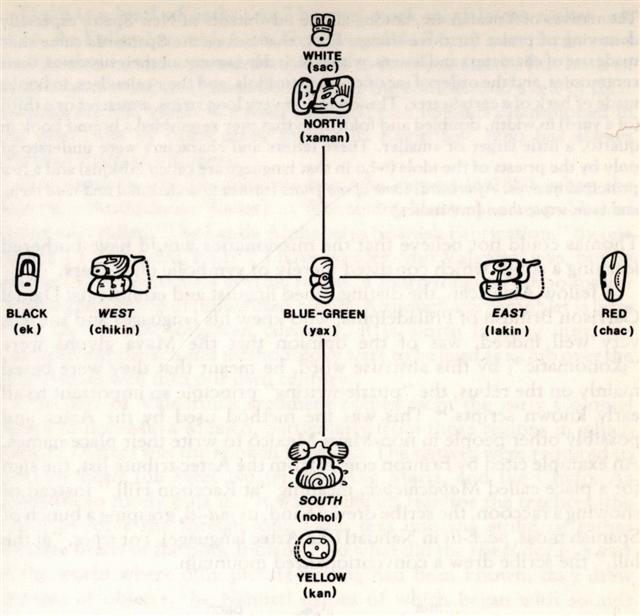
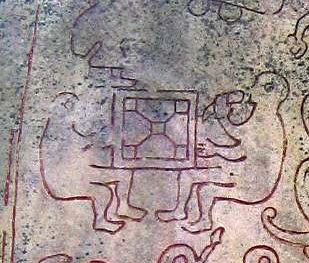 |
 |
 |
 |
 |
 |
 |
 |
 |
|
Ea3-19 (84) |
Ea3-20 |
Ea3-21 |
Ea3-22 |
Ea3-23
(88) |
Ea3-24 |
Ea3-25 |
Ea3-26 |
|
tagata rere toki |
manu puo pouo |
toki |
mauga |
toki i te henua ku
tutu raua |
marama |
marama |
|
Tutu,
1. Circle of fishing nets arranged in
the shape of a funnels or baskets. 2. To
light a fire; he-tutu i te ahi: to
burn something. 3. To hit, to strike, to
beat. Tûtú, to shake (something)
clean of dust or dirt; he-tûtú te oone o
te nua, to shake the dirt off a nua
cape. Tutuhi, to reject the
responsibility for a mistake onto one
another, to blame one another for a mistake
(see tuhi). Tutuki, to
stumble, to trip. O tutuki te va'e,
in order not to trip. Tutuma,
firebrand, partly burnt stick. Tuturi,
to kneel. Vanaga. 1. To beat bark for cloth.
PS Pau., Mgv., Mq., Ta.: tutu, id.
Sa., To., Fu.: tutu, id. 2. A broom,
to sweep, to clean. Mq.: tutu, to
beat out the dust. 3. To shake, to winnow.
Mgv.: tutu, to tremble, to leap. Mq.:
tutu, to shake. 4. To kindle, to
light, to ignite, to set fire, to burn. Mq.:
tutu, to burn, to set fire. 5. To
stand; hakatutu, to set joists. P
Mgv., Mq.: tutu, to stand upright.
Ta.: tu, id. Tutua (tutu
1): board on which bark is beaten into
cloth. PS Mgv.: tutua, a cloth
beater. Mq., Ta.: tutua, wood on
which cloth is beaten. Sa., Fu.: tutua,
id. Tutui: tutui ohio, chain,
tutui kura, shawl. Mq.: tuitui
kioé, chain. Tutuki: shock,
contusion, to run against, to collide;
tukukia, to run foul of. P Pau.:
tukituki, to strike, to pound, to grind.
Mgv.: tukia, to strike against,
shock, concussion. Mq.: tutuki, id.
Ta.: tui, id. Tutuma: 1. (tutu
- ma) a live coal. 2. Tree trunk T (?
tumu). Tutumata, ligament of
the eye, orbit, eyelid. T (tutumate,
eyelid G). Tutuu, bristling.
Churchill.
Roko.
Ma.: The deity Rongo: Ka ki atu a Tu
raua ko Roko ki a Rehua. Rokohaga,
to be overtaken or come upon; to be reached:
Rokohanga e te ponga, rere noa atu,
Ka rokohanga hoki e te uranga mai o te
manuhiri nei. Cf. rongo, to hear,
to feel, to smell, &c.; tidings, report. 2.
To be remedied: He mate kai e rokohanga,
he mate anu ekore e roko hanga. Text
Centre. |
One week after the right ascension line at the south
pole star Dramasa was the Foundation,
i.e. where the Sun reached the star
ξ
Aquarii (*327) and where Sirius
culminated at 21h.
... The letter [ξ] seems to have originated
from the Phoenician letter samekh (tent peg,
supporting prop), which in turn may have been
derived from the ancient Egytian djed column
...

In the next day (February 12, 408) the Sun rose together
with Nashira, the Lucky One, i.e. the Western One
in the Tail of the Goat, γ
Capricorni.
... In its unattested Proto-Canaanite form, the
letter [gamma]
may have been named after a weapon that was
either a staff sling or a throwing stick,
ultimately deriving from a Proto-Sinaitic glyph
...

|
Febr 13 |
2-14 (45) |
*3 |
414 = 14 *
29½ + 1 = 7 * 7 |
|
*329 |
*330 |
Kae Uh,
Roof,
ο Aquarii (*334.0) |
|
DENEB ALGIEDI |
ALL HEARTS' DAY |
SAD-AL-MELIK (α) |
|
Tail of the Goat |
The Lucky
King |
|
27 Eastern One in
the Tail of the Goat |
War-god Kuu
returned to power |
12
ROOFTOP (Swallow) |
|
Aug 12 (224) |
13 (45 + 180 =
225) |
17 (229 → 414 -
185) |
... After the assassination of Captain Cook they
were able to retrieve his dead body - with the
exception of his head and his hands. This probably
meant not
only the Head but also Hands were necessary for
re-creation ...

I have no Aquarius star in my list between ξ
(Bunda, the Foundation) and ο (Kae Uh, the Roof) and neither is there any
letter in the Greek alphabet between ξ and ο.
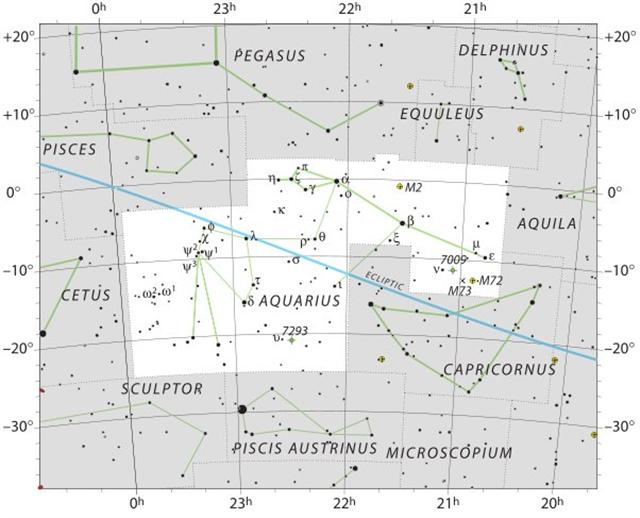
This phenomenon resembles how there is no letter Q illustrated on the bottom of
the 'precious vase' below, between Π and R:
... The Spirit
Bird of Sun possibly corresponds to the
Chinese 23rd station
Ghost [→ Goat].

Its leading
star is said to be 'q Cancri'. Strangely the
internet site Chinese Astronomy never
uses Greek letters for the stars, e.g. is
Tejat Posterior (μ Gemini) referred to as 'm
Gemini'. However, there is no Greek letter
corresponding to the letter 'q'. Possibly
the idea is to refer to the ancient Greek
letter koppa, a reasonable sign for
something dead and only living on in
peoples' minds ...
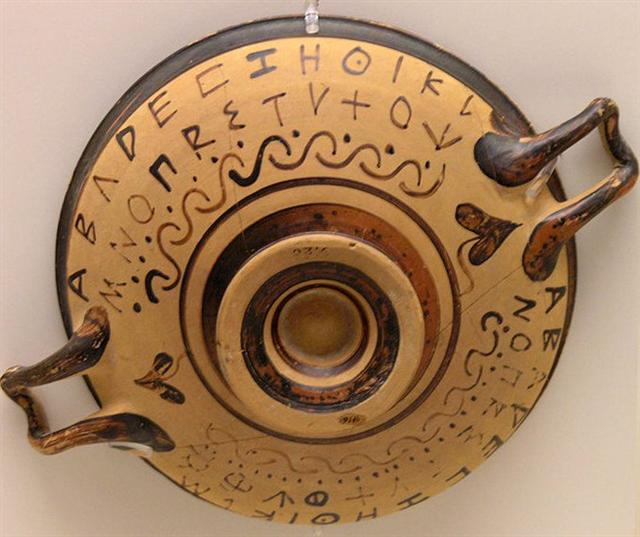
|














